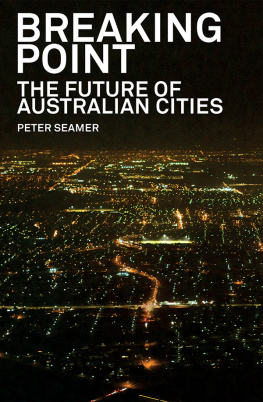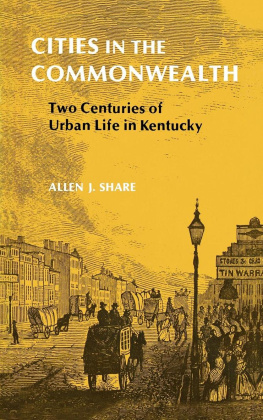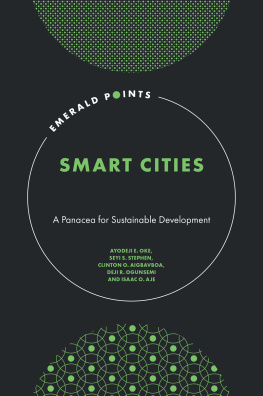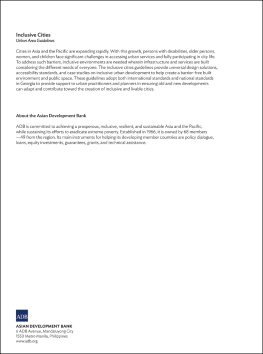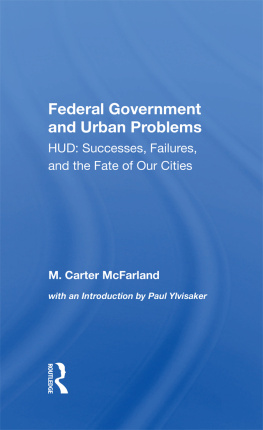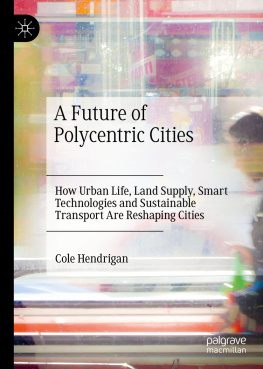
Published by Nero,
an imprint of Schwartz Publishing Pty Ltd
Level 1, 221 Drummond Street
Carlton VIC 3053, Australia
www.blackincbooks.com
Copyright Peter Seamer 2019
Peter Seamer asserts his right to be known as the author of this work.
ALL RIGHTS RESERVED.
No part of this publication may be reproduced, stored in a retrieval system, or transmitted in any form by any means electronic, mechanical, photocopying, recording or otherwise without the prior consent of the publishers.
9781760641290 (paperback)
9781743820803 (ebook)

Cover design by John Warwicker
Text design and typesetting by Tristan Main
To my granddaughter, Skye, and to all those of her generation who will gain the benefits of well-planned cities if we can avoid the mistakes of the past.
This is for you.
PREFACE
I have been involved in the planning and management of major Australian cities all of my professional career: first as a transport and urban planning professional and subsequently, for a number of decades, as the CEO of a number of large councils, Federation Square in Melbourne and, finally, the Victorian Planning Authority. I believe that the way we plan and build our cities needs to change.
In the political and professional conversations about our cities there are very strongly developed opinions and generally legitimate vested interests that include political parties seeking to win seats, academics following overseas fashions, bureaucrats protecting their jobs, single-purpose activists and lobbyists pursuing specific agendas, unions looking after the short-term interests of their members, and property owners, developers and large construction companies seeking to maximise their financial outcomes. These interests often distort the best and most rational thinking on our cities many of these perspectives are challenged in this book.
I believe we need to be future-focused. In this book I set out some strategies to help us create twenty-first-century cities: to move away from the development and planning culture we have laboured under for the last fifty years, and to create more broadly based more localised major cities in Australia.
I have written the book to tackle head on issues that some will see as bordering on sacrilege: why radial trains and freeways wont solve congestion, why rich people living in inner suburbs are supported financially by those living in the suburbs, why we shouldnt give up on regional cities, and how overly politicised decisions made before elections harm our cities.
Cities are highly complex organisms and while Breaking Point cant cover everything in detail, it aims to be a readable discussion about our cities not only what we have today, but how we got here and, most importantly, what options we have for the future. And it aims to start more discussions. However, discussion alone will not bring about change, and so in Breaking Point I offer a range of specific actions that government agencies, non-government organisations, private businesses and individuals can take to help create cities that are more liveable, more accessible and more equitable.
Changing how we develop Australian cities will not be easy, but hopefully this book can help us cultivate cities that are more localised organised around a number of technological, commercial, cultural and residential hubs rather than one thronged and overburdened CBD resolving traffic congestion, reducing transport expenditure, and extending amenity access to all parts of our cities, making them more urban and more equitable. Generally we know what we need to do; the problem is that, for a variety of reasons, we are not doing it.
A caveat, before we begin: I wish to borrow the apology offered by that great and much cited critic of cities and architecture Lewis Mumford, that my method demands personal experience and observation, and I have therefore confined myself as far as possible to cities and regions I know well. In my case, these are major east-coast Australian cities Melbourne in particular. However, many of the general principles I discuss here, and many of the solutions and policy resolutions I suggest, apply to all of our major cities and to the regional centres beyond them.
WHATS THE PROBLEM WITH OUR CITIES?
Albert Einstein has often been incorrecty quoted as defining insanity as doing the same thing over and over again and expecting different results. This is precisely what we are doing with our cities. This book identifies the actions we are taking or not taking and recommends new priorities so that we can build our cities differently.
Our lives are fundamentally influenced by where we live, and for the vast majority of modern Australians this means large cities. The states of South Australia, Western Australia and Victoria all have over seventy per cent of their population in their capital city. New South Wales is not far behind (ABS 2016a).
Our cities are truly remarkable, complex achievements. They provide an environment for humans to work and thrive in safety, supplied with both the essentials and the creature comforts of modern life. However, any complex structure is at risk from any number of threats. For cities, the pace of population growth and technological change are probably the greatest of such threats, with the potential to undermine our lifestyles and economy. While we in Australia are told on the one hand that our cities are some of the worlds most liveable, articles in our media increasingly focus on our cities transport, residential, environmental and infrastructure problems, and experts are always at the ready to issue warnings of doom and gloom.
According to Infrastructure Australias recent paper, Future Cities: Planning for Our Growing Population (2018), Australias largest cities are facing a watershed moment in their growth and development. In the coming three decades, the size of the Australian population will grow substantially. Between 2017 and 2046, our population is projected to increase by 11.8 million people. Thats equivalent to adding a new city roughly the size of Canberra each year for the next thirty years. Many of our cities will double. As the report sets out, we will need at least twice as many homes, and there will be, potentially, twice as many trips on our roads and trains. If current trends continue, about seventy-five per cent of this growth is expected to occur in Sydney, Melbourne, Brisbane and Perth.
This rapid, centralised growth creates highly contentious issues and many pressing questions. There is significant community disquiet in relation to both urban densification and urban sprawl. How can we double the number of homes in our cities if change is so unpopular? If we dislike urban sprawl, tall towers in windswept inner-city areas and increased density in the suburbs, how will we house all of the new residents? What infrastructure do we need and how will we pay for it? Will our cities become less liveable and more dystopian? Will Australian society increasingly become a place of the haves and the have-nots?
The effects of a growing population are already glaringly evident on our roads and public transport systems. As more and more people seek to move into jobs that are overrepresented in the inner parts of our cities, our roads and trains have never been more congested. And yet, much of the often fierce debate between advocates of public transport and dedicated road users misses the point: we know our roads cannot cope with even more traffic, particularly in the inner and middle ring. And yet, in cities like Melbourne, around seventy-five per cent of all commuter trips are made by car (ABS 2016b). Only around ten per cent of commuters go by train. Even if we double our train system over the next thirty years at huge expense and the current urban habitation pattern is continued, it wont touch this ratio, as our population too will have doubled. We will suffer more and more congestion until we start looking at our cities differently.
Next page
